Link-building is a noisy environment. Lots of opinions and free pieces of advice with no foundation are chocking the internet. Looking at the link-building myths, we discover an unsettled ground with messy directions and scary ideas that can bite, scratch and eat your website alive.
There are a lot of SEO myths, but today we’ll talk about the most damaging ones.
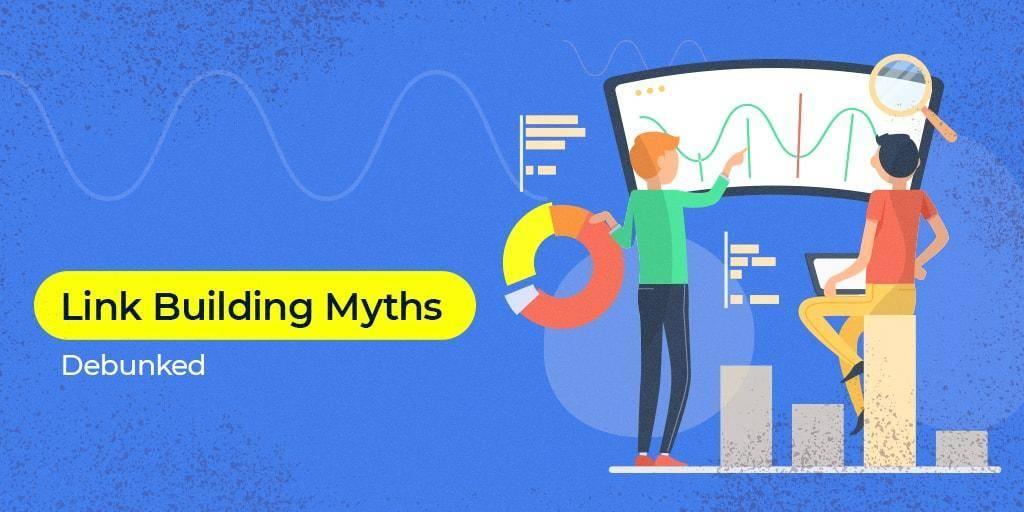
- All Links on a Page Pass Equal Ranking Value
- Image Links Are Bad for SEO
- All Links Should Be Nofollow
- Links Are Case Sensitive
- Links from Wikipedia Guarantee Top Rankings
- External Links Matter More Than Internal Ones
- Links Are the Most Important Google Ranking Factor
- Links from Other Niches Than Yours Don’t Help You Rank
A link-building strategy must focus on earning links naturally by following white hat SEO practices and taking into consideration Google’s quality guidelines.
Note to self: make sure you value the accuracy of information when it comes to link-building and basically everything related to your digital marketing strategies. It is important to make a difference between facts and myths.
1. All Links on a Page Pass Equal Ranking Value
First and foremost is the distributed value of links on a page. Lots of people say that all the links from a page pass the same value, regardless of whether they are positioned higher or lower in your article. While you might think this is true, try and look at the differences between footer links and body links. Only by comparing these two types of links can we see that link position matters.
This particular matter fits very well under the Google patent application – “Ranking documents based on user behavior and/or feature data”, which points out numerous factors which influence the value of a link:
- the font size of the anchor text associated with the link;
- the position of the link (measured, for example, in an HTML list, in running text, above or below the first screenful viewed on an 800×600 browser display);
- if the link is in a list, the position of the link in the list;
- font color and/or attributes of the link (e.g., italics, gray, same color as the background, etc.);
- type of the link (e.g., image link);
- the context of a few words before and/or after the link;
- Plus lots of other factors.
A debated ranking factor is the link position and whether a link that is positioned higher in content weighs more. According to Bill Slawski, Rand Fishkin and lots of other SEO experts, those links may determine a significant value passed on to the pages to which they link.
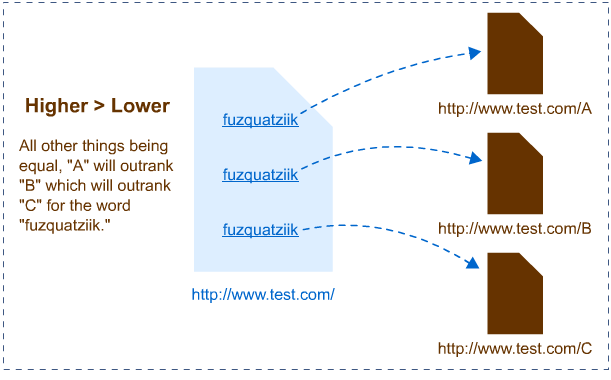
Source; moz.com
On the same notice, we must remember that lots of other signals are important for passing ranking value. If a link appears on a related page, with related anchor text that would be more valuable, than it is higher in the HTML code. In case we have two links and all the elements are similar and in favor, then the position might carry some value.
On a final note, we can say with certainty that links on a page cast different ranking values.
2. Image Links Are Bad for SEO
Another myth about link-building regards image SEO. If abused, every aspect of SEO might be bad. Such as image SEO – where a lot of spammers cluttered keywords in alt descriptions to get higher rankings and cheat Google’s system. That period is long gone, but some people still consider that image links are bad.
Another issue that feeds this link-building myth is the possibility of reading images by crawlers. A few years ago, Google’s bots couldn’t read the alt attribute from an image very weel to parse it and it was easier to understand the HTML text instead. That’s why Google’s Guidelines are saying:
| Try to use text instead of images to display important names, content, or links. If you must use images for textual content, use the alt attribute to include a few words of descriptive text. | |
| google guidelines | |
Adam Powell, founder of Abacus, explained how search engines see images:
| Actual <img /> images are considered content (unless quite small) and therefore should have alt text, they are also given higher priority in loading and rendering than CSS background images so there are accessibility and (contradictory) performance considerations. | |
| Adam Powell | |
| Founder of Abacus | |
The differences arise when that image appears on the page multiples times, or when the page has only images and not so much content (except for the niche photography websites), and alt texts are filled with rich keyword descriptions.
Since things have changed so fast the past few years, with the evolution of AI, the human interaction with technology and computer science integration in our lives, it was only natural for Google to step up into the game. That’s how Google is able to read images and understand the elements that compose it through the Object Detection in images.
If we were to think about images as alt text and text as anchor text when they carry a link, then images shouldn’t be any different than text. Basically, both are translated into the same language, in coding.
John Mueller said always have alt text descriptions and anchor texts when the need arises, never leave them blank. They are equally important and carry value for SEO.
Yes, but anchor text (and image alt text) helps us quite a bit in understanding context, so I wouldn’t leave it out if you can avoid it.
— John ☆.o(≧▽≦)o.☆ (@JohnMu) May 15, 2017
While Google is making big efforts to enable even better image understanding on our side, we can say with certainty that image links aren’t bad for SEO if they are used in context with appropriate alt text description.
3. All Links Should Be Nofollow
Some time ago I heard or read someone saying that all links should be tagged as nofollow, which I thought was funny at first. But there I saw that some people actually believed it and it wasn’t funny anymore.
In reality, most of the links are dofollow. On the whole world wide web nofollow links represent a very small percentage.
On a similar note, we saw that websites that had a natural backlink profile had more nofollow links than dofollow. Chances were that websites with spammy links had more dofollow links. In particular, there were pages with dolfollow links only. And that triggered our attention. We discovered lots of them were shady. Take a look at the example below:

The cluster below has only blue lines, which means that page has only dofollow links. It looks a little bit too … “perfect”? No. Shady. Shady is the word that fits the description. The example we used is from an analysis we made on the spammy links.
Google says that in general, nofollow links don’t pass value:
| In general, we don’t follow them. This means that Google does not transfer PageRank or anchor text across these links. Essentially, using nofollow causes us to drop the target links from our overall graph of the web. However, the target pages may still appear in our index if other sites link to them without using nofollow, or if the URLs are submitted to Google in a Sitemap. Also, it’s important to note that other search engines may handle nofollow in slightly different ways. | |
| Search Console Help | |
If we were to say that all outbound links should be nofollow, then imagine the next situation. Nofollow links don’t pass any value, no authority, no influence. What would happen with the domains? How would they be evaluated? All will have the same link quality. That means they will be equal. And that doesn’t make any sense, because domain authority wouldn’t exist and it is an important metric in the ranking evolution.
It is irrelevant and damaging to have only links with the no-follow tag.
4. Links Are Case Sensitive
It is a little bit too much to say that capital letters affect SEO. Google clearly states that capitalization doesn’t affect search.
A search for
New York Timesis the same as a search fornew york times.
We wanted to test it to see if that’s really the case. Should you use big letters in the title or not? To check this dilemma, we looked at both text content and video content, because the last one is becoming more and more popular nowadays.
In all of our examples, we noticed that the only difference between the two types of content is the number of Google results. If you take a look at the next two screenshots you can see that the query “Empire State Building” has 240M search results and “empire state building” has fewer results – 207M.
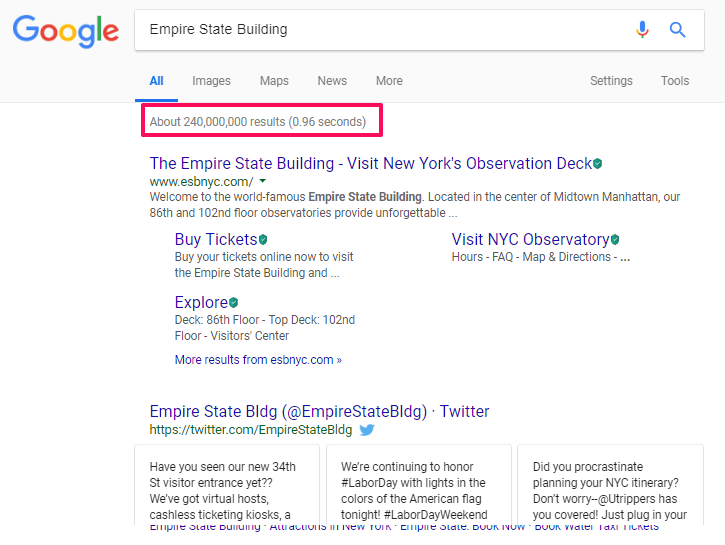
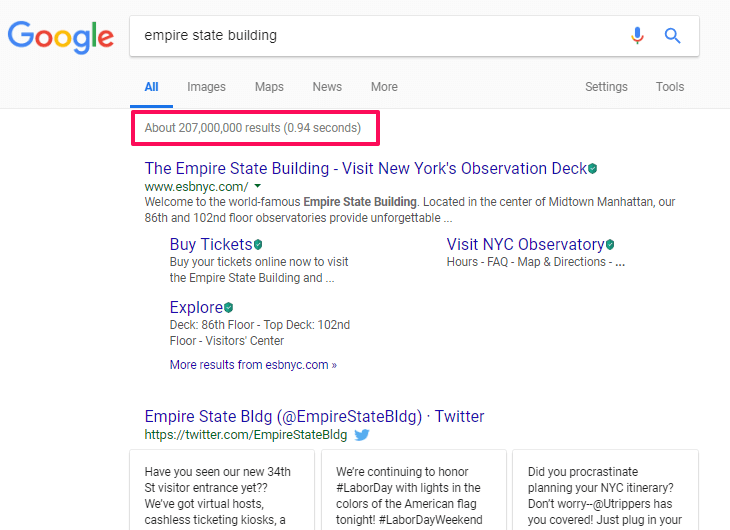
I didn’t put all words in the upper case, because it is treated as spammy by several spiders in search engines.
When we searched for the same query on video content, we saw the same number of results with no difference whatsoever.
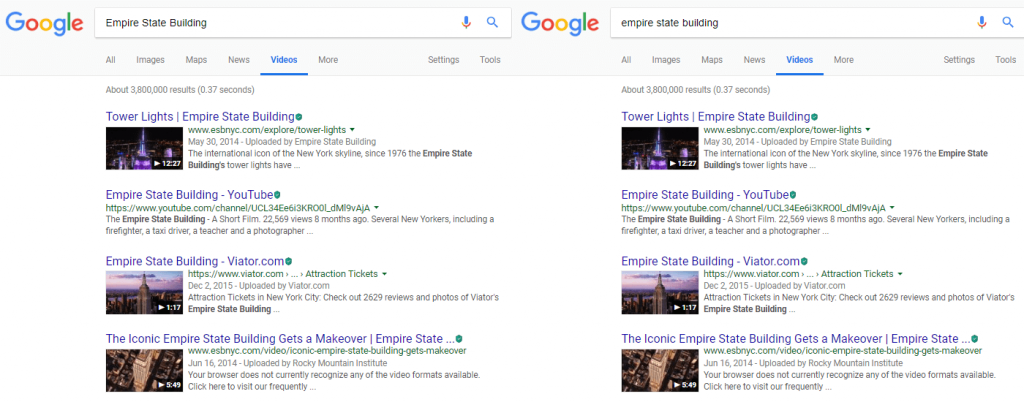
We had a big surprise when we tried this on YouTube, because while some keywords haven’t registered any differences on capital letters, some others have did, but only a few.
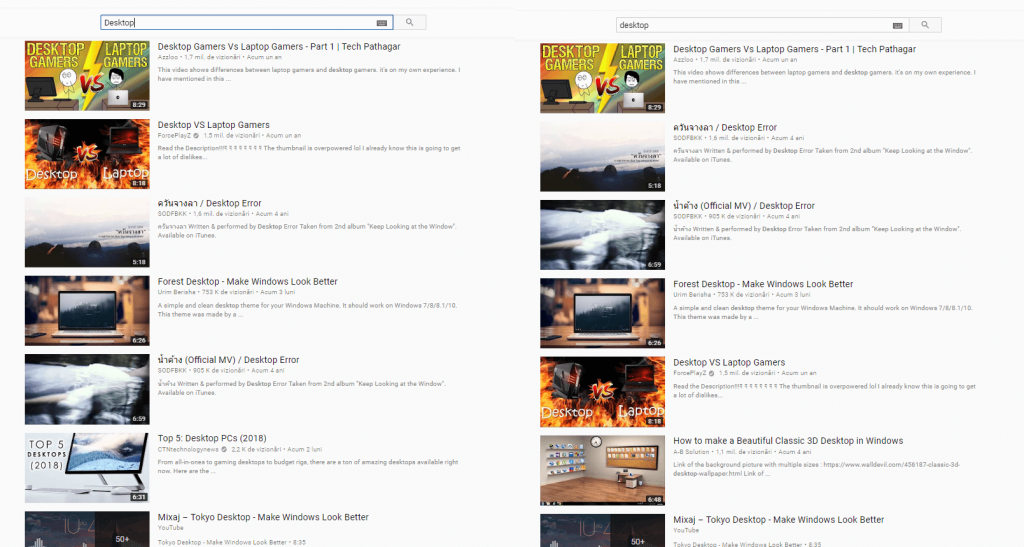
In the end, we’ve seen a few to no changes (within the same page) regarding the effect of capital letters on SEO. As Google mentioned, they don’t influence rankings so it’s all just a myth.
5. Links from Wikipedia Guarantee Top Rankings
Another myth that breaks the glass: links from Wikipedia and other similar websites with high authority can guarantee top rankings. It has been a misconception for a long time with Wikipedia links.
Gary Illyes, Google representative, answered to this issue on Twitter saying that Google ranks Wikipedia just like other websites on the web.
Wikipedia is ranked just like any other website.
— Gary “鯨理” Illyes (@methode) December 16, 2016
Leaving other opinions aside, this information comes directly from Google and has maybe more truth than we can find on the whole internet. So, we can see written in black and white that links from sites such as Wikipedia and other highly influencing websites do not receive any special treatment from Google. It rather works on getting internal links to achieve more success.
So, don’t trust everything you hear. There are lots of rumors and you better test and see for yourself.
6. External Links Matter More Than Internal Ones
Well, after all the talk we had on Wikipedia, this link myth comes just like a supplement to the value of links (be them external or internal).
Internal links, besides the other on-page factors, are maybe more important than inbound links:
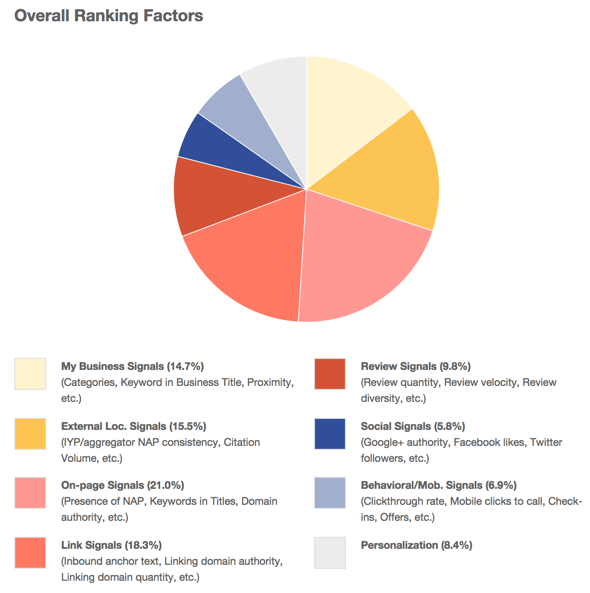
Source: netregistry.com.au
Internal links can help your lazy pages rank better by inter-linking (creating connections) with high ranking pages. The procedure is simple. Take some pages that have potential but don’t rank very well and place their links on the most appreciated pages (with lots of traffic) from your website to pull the lazy pages on SERP.
By linking them this way, lots of link power from one page is transferred to the deep pages of your website. We all know how important is for a website that the visitors spend more time on site. Dwell time is a long debated subject along the ranking factors and Google always tries to tell us how important user experience is. So internal linking can help a website very much and value sometimes even more than external links.
Saying that external links are more important would be wrong. Google’s uses lots of ranking signals and links is just one of them.
7. Links Are the Most Important Google Ranking Factor
Going further with the explanation of links, we had to debunk another myth, such as that inbound links are the most important ranking factor in Google search. Nope, not true. No, no, no!
Google Search Quality Senior Strategist Andrey Lipattsev said, during a Google Q&A, that content, links and RankBrain are the top three ranking factors, besides other over 200 raking factors, which should not be forgotten. They are related to user experience, dwell time, mobile usability, content quality, on-page SEO, link performance, organic results and so on.
Google’s ranking signals are dynamic and are created in a way to offer accurate and contextual results by evaluating the searches performed by each user so that every person might see different results.
So to say it out loud, inbound links are not the most important ranking factor, but equally valuable to content and RankBrain.
8. Links from Other Niches Than Yours Don’t Help You Rank
Another myth about link-building is the belief that links from irrelevant sites are useless and don’t help you rank and they are basically low-quality links. I can understand that it can be a little doubt in this because we were taught that you need relevant links, authority links to rank high, and so on and so forth. But don’t fall into that trap.
I think people might be confusing relevant links with authority links. A relevant link means a link in the same niche, an authority link comes from websites with a high domain authority. The SEO advantage comes from the lasts ones, and never because the link is niched.
But not only DA is important to define a high-influence website, but rather Trust Flow, the number of links, the places they are on, the anchor text, the amount of quality traffic received by that domain and a lot more. So being attentive to the keyword linking back to your site is highly valuable. Make sure they’re not keyword rich anchor text, though.
It often happened that out of niche links might be very helpful. Usually, they are hard to get, and the competition is very high on those. They tend to be editorially given.
Conclusion
You shouldn’t believe everything that’s written on the web, take information with a grain of salt. There might be some common link-building myths that, at certain times, fall into the black hat SEO techniques. Don’t get fooled by some common link building myths such as these ones.
All of the above misconceptions and misinterpreted pieces of information will do a lot of harm to a website. People often think that Google favors specific sites, and they are keen on securing links on such sites to boost rankings. My advice to you is not be one of that crowd. It’s just another myth about link building. Don’t follow all the shady linking strategies you hear that might work. An earned link will be always more valuable than anything.

 Site Explorer
Site Explorer Keyword tool
Keyword tool Google Algorithm Changes
Google Algorithm Changes

Excellent article and well written. Thank you. It is very helpful.